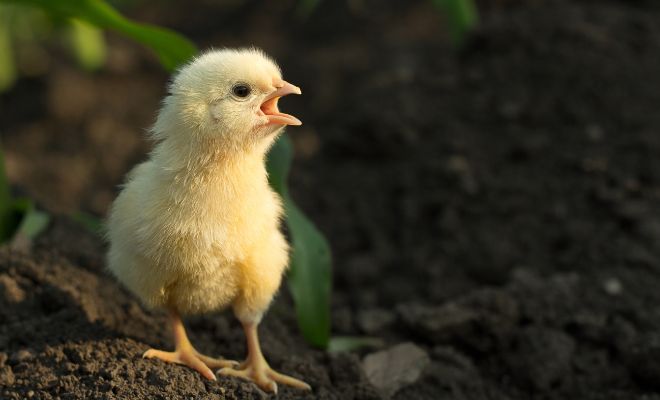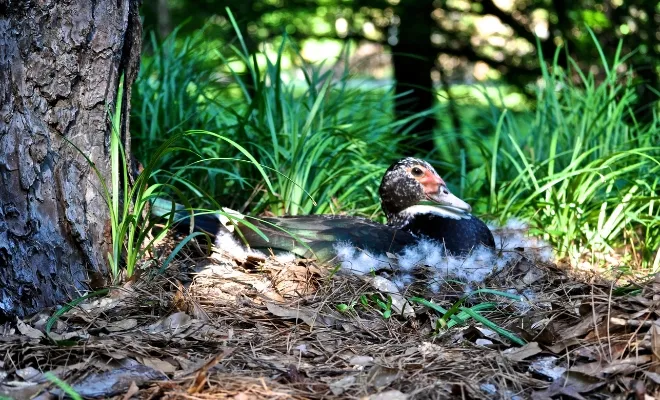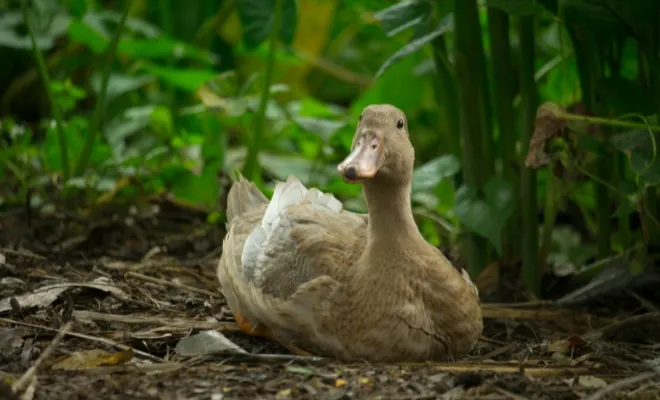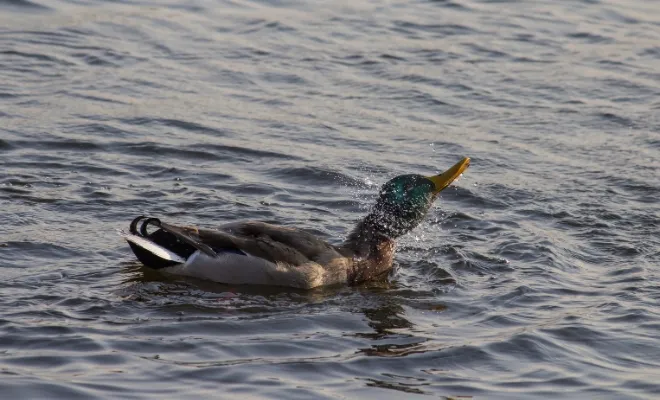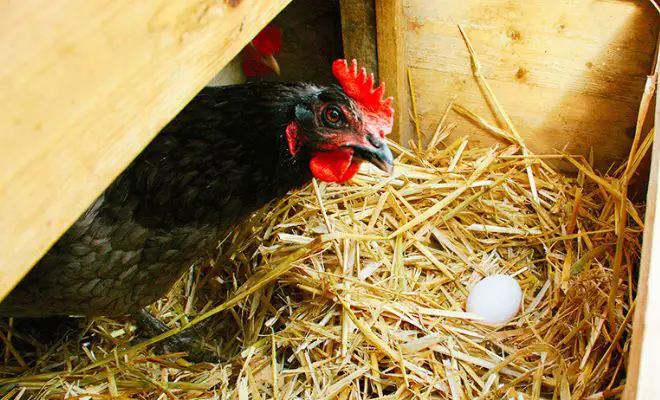My Chicken’s Losing Feathers! Is It Molting or Sickness?
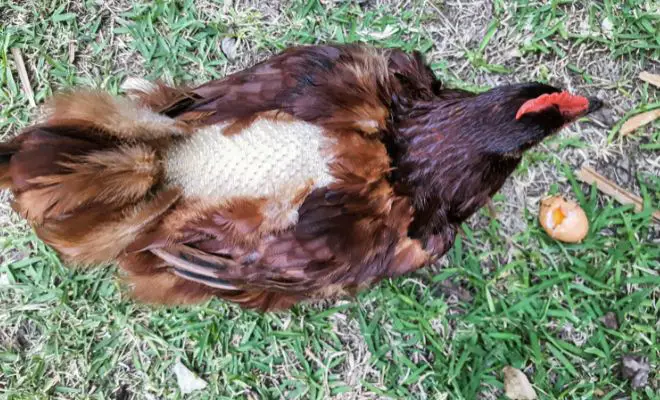
Have you spotted your feathery friend looking a bit bare lately? It’s likely just your chicken molting time! Molting is a natural cycle where chickens shed their old feathers and get a new shiny set.
This shedding season can last anywhere from a few weeks to a few months. While your chicken might look a little comical with patchy feathers, there’s no need to fret. In fact, molting is a healthy process that helps chickens stay in good condition. By growing fresh feathers, it keeps them warm and protected.
Let’s uncover why it happens, and what to expect during this feathery transformation. I’ll also include some helpful tips throughout this natural change!
Table of Contents
Chicken Molting: Why Do Chickens Molt?

Molting is a natural process in poultries. So, nothing to worry about!
But why does molting happen?
As chickens grow older, their feathers get worn out. Molting helps them replace these old feathers with shiny new ones.
New feathers keep chickens warm and dry in cold weather. It also makes them look attractive to other chickens.
It’s all a clever trick by a tiny gland in your chicken’s body called the thyroid. This gland sends out messages to chickens to transform their old feathers into new ones.
Chickens molt several times in their lives.
- First Juvenile Molt (6-8 weeks): Chicks trade soft downy feathers for real feathers in about 4 weeks.
- Second Juvenile Molt (8-12 weeks): Chickens get their adult feathers, and roosters start growing fancy feathers.
- Annual Molt (18 months+): Chickens refresh all their feathers for insulation and waterproofing. It usually happens in the fall and lasts 8-16 weeks.
Do Roosters or Cockerels molt?
Roosters or Cockerels also molt, becoming infertile during this time because they lose weight. Ensure roosters don’t lose more than 25% of their weight to avoid sterility.
The Chicken Molting Symptoms include –
- Patchy feather loss
- New feathers emerging (pin feathers)
- Feathers scattered around the coop.
- Aggressive or suddenly shy chicken
When do chickens molt? At what age do chickens start molting?
Molting usually begins in the fall, preparing chickens for winter. However, the timing can vary by several weeks.
Chickens typically go through their first adult molt at around 18 months old. Molting is triggered by a decrease in daylight hours.
Not all flock members molt simultaneously. The process occurs gradually over several weeks.
Young hens (less than twelve months old) do not molt in their first year. Broody hens may molt after caring for their chicks.
What month do chickens molt? It usually occurs in late summer or fall. It can also be fall or winter when chickens molt.
How many times do hens molt? Adult chickens molt once or twice a year, with one molt being heavier than the other. Some breeds may also have a soft molt where they only lose a few feathers at a time. Well, it’s not specific but young hens (less than 12 months), broody hens, or pencil-laced Wyandotte may do soft molt.
How long does molting last in chickens? The molting process can take anywhere from 8 to 16 weeks.
What Does a Molting Chicken Look Like?

A molting chicken can look a bit disheveled and patchy. They will lose feathers in a specific order.
Now, how do I know if my chicken is molting? You may see the molting starts at the head and neck. Then, it works its way down the back, body, and wings. They may have bare patches of skin showing through. Also, their tail feathers may be missing or stubby.
There are two main types of molts:
- Hard molt: Chickens lose a large number of feathers quickly and can look almost bald in patches.
- Soft molt: Chickens only lose a few feathers at a time, so it may be less noticeable.
Molting chickens may look scruffy, uneven, and less vibrant. Some hens even appear smaller due to feather loss.
But over time, the fresh feathers cover the body. When developing, the sheath wears off, revealing glossy, fully-developed feathers.
What Happens When Chickens Molt?
Poultry chickens lose their feathers is the first thing to notice during the molting period. But more things happen at that time!
Chickens lose feathers in a specific sequence. Growing new feathers requires a lot of protein, which is the main building block of feathers.
Is molting painful for chickens?
No, molting can be uncomfortable and stressful for chickens, but it’s not considered extremely painful.
They may burn more calories to fuel feather development. It leads to a slight decrease in weight.
What behavioral changes can I notice during the chicken molting session? You may see a chicken lethargic. They conserve energy for feather growth. So they might seem less active than usual.
They may become withdrawn and prefer to stay on their own while their feathers grow back. Also, the new feather growth can be irritating, so you see them preening.
Does Chicken Molting Affect Egg Production?
Yes, molting significantly impacts egg production.
Growing new feathers requires a lot of protein and energy. During a molt, a chicken’s body prioritizes feather regrowth over egg laying. This means egg production typically slows down or stops completely while they’re molting.
How Long Do Chickens Molt and Not Lay Eggs?
As I said, the molting process itself takes between 8 and 16 weeks. However, the egg-laying pause might not perfectly align with this timeframe.
Some hens may stop laying eggs earlier in the molt and resume a little later.
“Hard molts” where chickens lose feathers rapidly often lead to a more significant drop in egg production.
Do Chickens Lay Eggs When Molting?

Some hens can lay a few eggs sporadically during their molt. It’s especially during the very beginning or end stages.
However, consistent egg production typically resumes only after they’ve completed molting.
Molting usually finishes by July, and hens start laying eggs again.
Young hens (pullets) molt 4 times before they start laying eggs. Those that begin laying in early spring may continue until April. But many will molt in May and June.
How Do You Help A Molting Chicken? 5 Tips!
As molting is a natural process and nothing to worry about, you can help them during this time. But how?
1. Reduce Stress
Avoid moving chickens to new living quarters or introducing new flock members during their molt. They also need a calm environment. It helps chickens focus on feather regrowth.
2. Nutritional Need
Feathers are mostly protein around 80 to 85%. So during a molt, their dietary needs include protein the most!
So, how much protein do chickens need during molting? Provide a feed with a higher protein content (around 18-22%). You can also supplement their regular feed with protein-rich treats. For example – mealworms, black soldier fly larvae or scrambled eggs.
Most importantly, ensure they have plenty of fresh food and water.
3. Dust Bath
Dust baths are essential for chickens to keep their feathers clean and healthy. This can be especially helpful during a molt as it can alleviate some discomfort from growing feathers.
So, you can provide a dust bath pan filled with a mixture of sand, dirt, and ash.
4. Reduce Parasites
During molting, chickens might be more susceptible to parasites due to compromised feather coverage. So, people often ask is it chickens molting or mites? It’s actually their molting time.
Here the thing is you have to regularly check for mites and lice, and treat them if necessary.
5. Comfortable Hideaways
I would say to offer hiding spots where molting chickens can rest and feel secure. Comfortable roosts can also help them feel safe during the process.
See the video to learn more about Molting in Chickens.
Why Do My Chickens Never Molt?
It’s unlikely that your chickens literally never molt. However, there are a few reasons why it might seem like they never molt.
- Age: Young chickens (under 18 months) don’t go through the regular molting cycles of adult chickens. They might have a few minor molts as they grow to their full size, but these are less noticeable.
- Soft Molt: Some breeds or individual chickens may experience mostly “soft molts” where they only lose a few feathers at a time. This can be so gradual that it’s not very evident.
- Stress: If your chickens are constantly stressed, it can delay or prolong their molting cycle. Stressors like overcrowding, lack of hiding spots, frequent handling, or illness can all play a role.
- Nutrition: Improper diet, especially a lack of protein, can hinder feather growth and slow down the molting process.
Related Reads:
FAQs
Have more questions? See the following section to get your answers!
Q. Do all chickens molt?
Yes, all chickens molt at least once a year as adults.
Q. Do chickens molt in summer?
Molting is usually triggered by shorter daylight hours, so it often happens in late summer or fall. However, some hens may molt in summer due to stress or other factors.
Q. Is my chicken molting or sick?
Molting typically involves patches of feather loss and pin feathers. If your chicken seems lethargic, has an unusual discharge, or loses feathers excessively, consult a vet to rule out illness.
Q. Do chickens stop eating when they molt?
No, but they might eat slightly less due to using energy for feather regrowth.
Q. Do chickens bleed when molting?
No, molting shouldn’t cause bleeding. Bleeding feathers might indicate injury or parasites. Check for wounds or consult a vet if you notice bleeding.
Q. Is corn good for molting chickens?
Corn isn’t a bad occasional treat, but it’s not ideal for molting chickens. Rather feed them higher protein-rich supplements like mealworms.
Final Word
Chicken molting is their way of refreshing, shedding old feathers for new ones. It’s a time when they need extra care and attention. Imagine if you were going through a makeover – you’d want support, right? Well, chickens do too!
By ensuring they have good food, a stress-free environment, and lots of love, we can help them sail through this phase. Let the chicken stay comfortable during the molting process. Let them bring back to business for their appearance and egg production!

